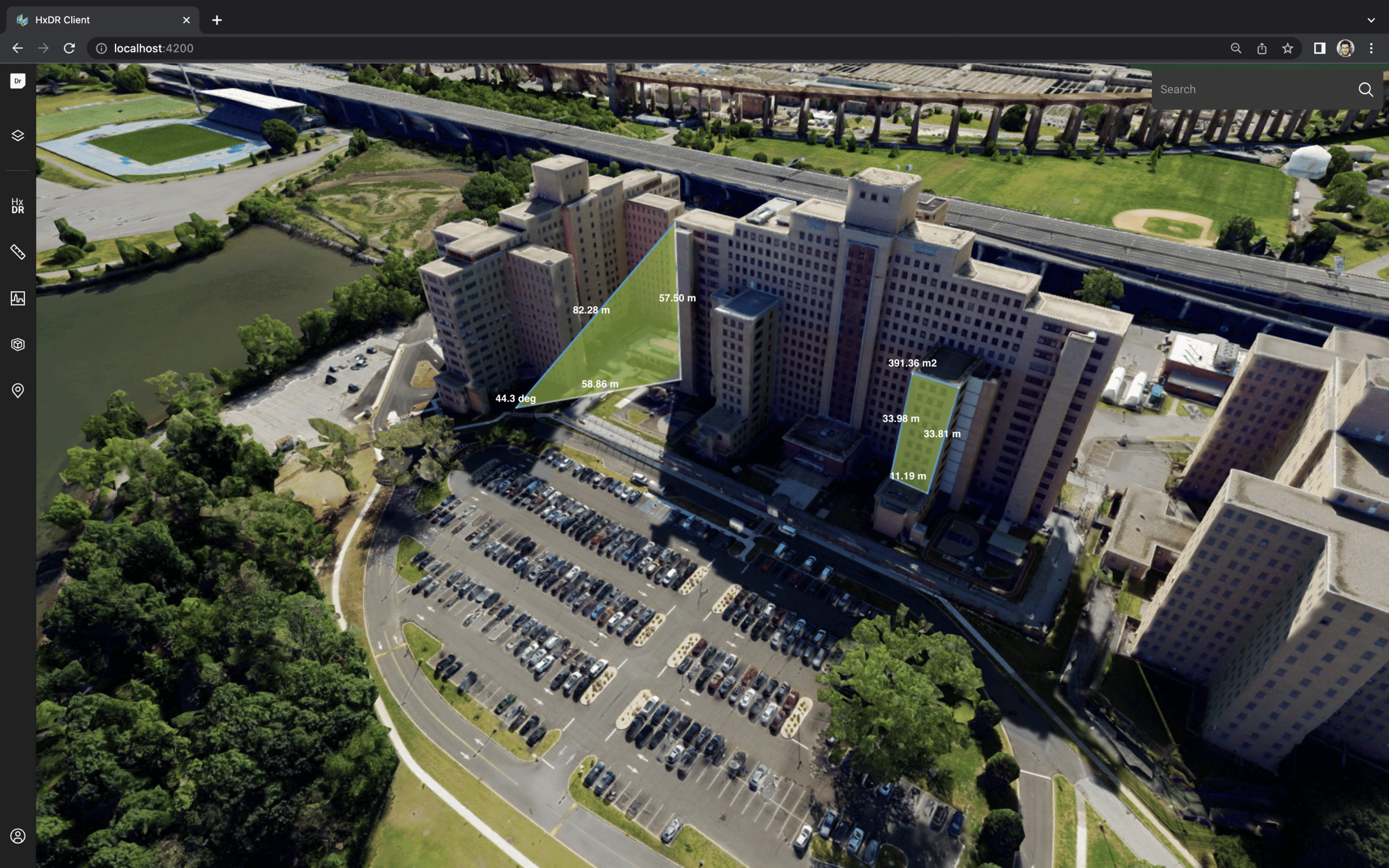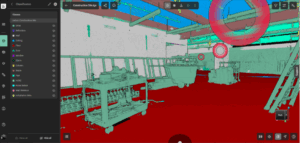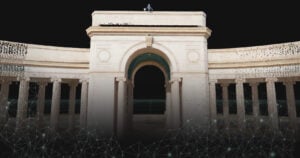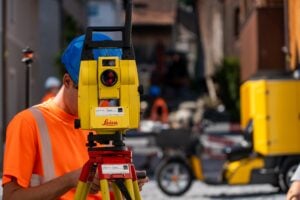Hexagon Digital Reality (HxDR) represents an ambitious vision to combine a wide range of digital reality data and capabilities into a single cloud–native platform. It brings features and functionalities from the vast technology portfolio of Hexagon into the cloud and to our users.
This is the story of HxDR’s past, present, and future — and how it’s redefining the way reality data in the cloud can be used.
A vision for a new digital reality
HxDR was born out of Juergen Dold and Burkhard Boeckem’s vision of combining the geospatial data world with the reality capture world and, in doing so, bringing the local data from lightweight scanners together with the large-scale data from City Mappers and other devices.
"HxDR has a fantastic cloud architecture, and it’s scalable,”
said Boeckem, Chief Technology Officer Hexagon.
“That’s why we built a corporate platform, so every Hexagon division can benefit."
“The goal of HxDR was to open up geospatial content and reality capture in the cloud with a set of essential tools and processes that were intuitive, accessible, and highly automated,” said Frank Suykens, Senior Vice President of Visual Computing at Hexagon, and who has been with HxDR since the very first brainstorming sessions. “Looking at all segments and use cases in reality capture — we wanted something that brings this all together, from airborne mobile mapping of large city models to individual scans from handheld scanners.”
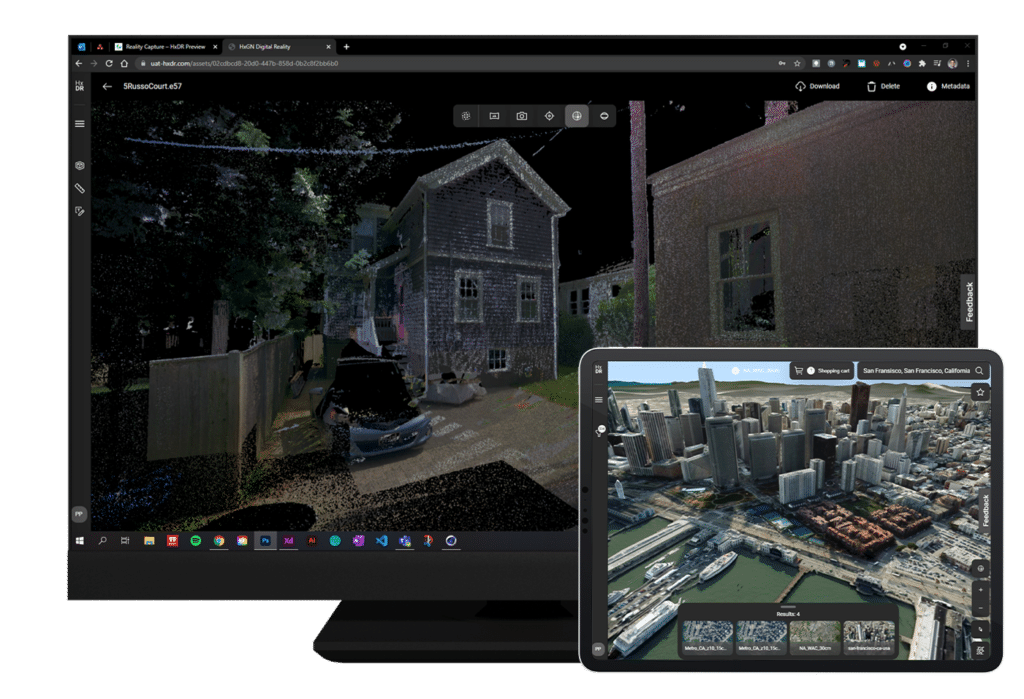
The HxDR project also envisioned capabilities such as automatic meshing and registration of point clouds; direct uploads from the field to the cloud; collaboration tools; and more. All in the spirit of democratization of reality capture.
Developing all these pieces of HxDR led to new opportunities along the way.
“I got to see the vision coming together from the smaller scale ‘Dropbox for architects’ concept to the large-scale geospatial content store,” said Mehmet Kovacioglu, Director of the core Digital Reality R&D Team, and one of the key initial engineers and architects of the platform. “We achieved the combination of the two — and were set up for much more.”
From ambitious concept to a groundbreaking platform for reality data solutions
Building HxDR required cloud capabilities with storage and visualization features and a store from which you could purchase geospatial data. But while developing these features and integrating various technologies into a unified space, the team never lost sight of an even more ambitious underlying goal: allow others to leverage HxDR to power their own solutions —in essence the most complete realization of the initial vision.
“Yes, we innovated on scalable point cloud storage and streaming, we innovated on processing scans, and unified the visualization of points, 3D models and images. Yes, we enabled easy management of vast data sets and many scans in the cloud,”
Suykens said. “But as the whole thing grew, HXDR as a platform emerged and started its own move into the market.”
The HxDR platform includes a complete ecosystem of tools and capabilities upon which many different implementations of reality capture solutions can be built, from the core functions of reality capture data processing like auto-registration, auto-meshing, measuring, and annotating, to the easy creation of visual tours of reality data, the ability to store and process huge reality data files in the cloud, manage users and user permissions, and exporting end products in a variety of formats, to name a few.
But now, developers can also take advantage of the enormous power of the HxDR by accessing the platform’s application programming interface (API), along with a web app developer kit, the Luciad-based “StartApp”.
“We have the same data as before, but how you mix and match that data and how you make use of that by developing your own application on top of it is up to you,” Kovacioglu said. “My team develops several of the innovative SaaS applications, but the capability for applications to be built by others, I think that is by far the most transformative.”
“In the past 18 months, we’ve seen a huge increase of platform use cases where the same architecture is used in completely different workflows, but always keeping the same focus about data management, data processing, and data dissemination,” said Frederic Houbie, Program Director Digital Reality at Hexagon Innovation Hub.
“That’s why we see this as a true Platform as a Service (PaaS) ready to build customized solutions with the same data and with the same processing on the data,” he continued. “Different applications can leverage the data in completely different ways, from an architect’s point of view to a construction company, or even to some art use case.”
“HxDR started with a concept application at CES and then expanded to a platform that is more like a spider in the center of a web,” Kovacioglu added.

Leveraging Hexagon companies’ technological innovations
Part of what accelerates HxDR’s capabilities are the strengths of technological innovations across teams in Hexagon. The platform combines the abilities and insights of over a dozen different Hexagon R&D groups to make it tick.
The platform also brings with it integration with many of the reality capture sensors that Hexagon makes — another core differentiator with HxDR..
“What makes Hexagon unique in the market is that it innovates on both hardware and software. So, we can offer end to end solutions, from capturing the data, uploading from field to cloud, running AI on the data in the platform, and then serving that data into various applications,” Kovacioglu said. “We integrate the connectivity directly in our own hardware, using Hexagon Xalt, and then out of the box the sensors can upload the data to HxDR. I think that’s a big difference.”
A future of limitless possibilities
Inside and outside of Hexagon, HxDR is cooperating with a growing set of teams – BLK, Cyclone, Content Program, M.App Enterprise, Nexus, IDS, HxGN Connect, Luciad, ALI, LocLab, Immersal, Mobile Mapping, Cyclomedia, Hydromapper, and many more.
The HxDR team sees the platform’s real power in how it’s engineered to evolve with each new use case and integration from groups within Hexagon.
“The goal is to break data silos between applications because all those data are potentially interesting for other teams and other use cases,” Houbie added. “Our end goal is to broaden the reach and open up capabilities of Hexagon technology via the cloud. We want to valorize the work done by the other teams and integrate them into a cloud platform.”
At present, HxDR is set up so that the data and innovation within the platform sparks new customer innovations externally and attracts new data back to it. The flywheel is picking up speed and the future of HxDR is just beginning.
